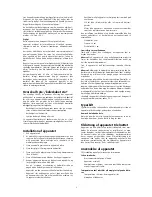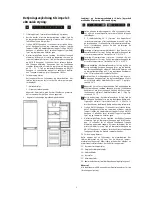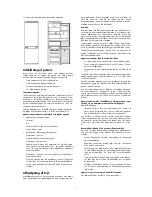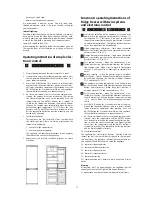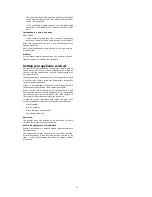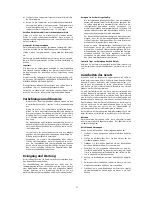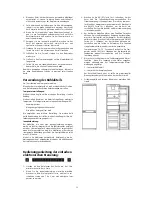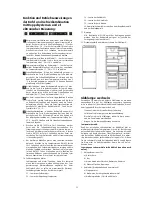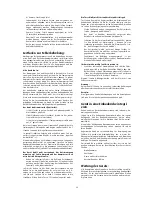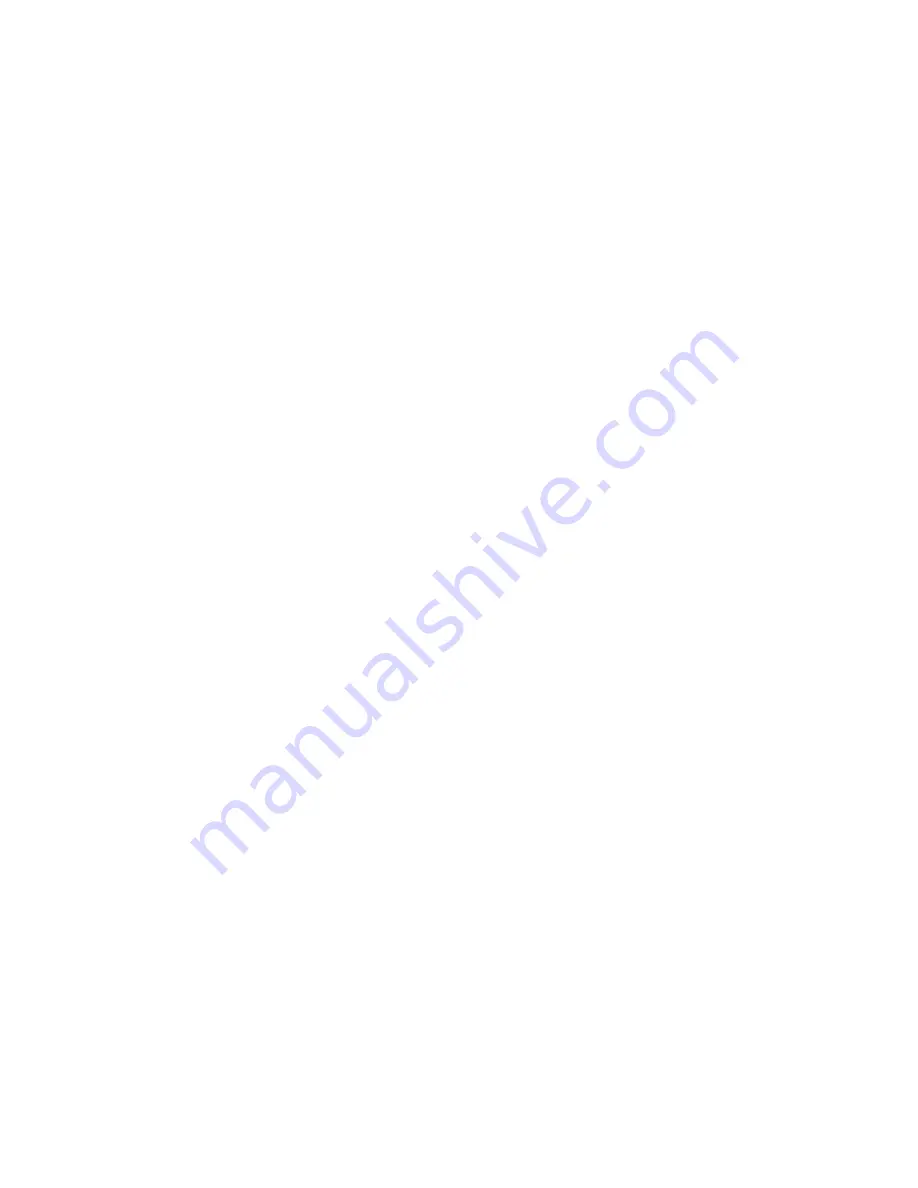
11
Do not eat any food beyond its storage time, this could lead to
food poisoning.
Precautions and advice
Whenever cleaning or defrosting , remove the power plug or
switch off the main fuse.
After closing the freezer door, do not open it immediately and
do not force it open under any circumstances. The vacuum cre-
ated by the sealing of the door is dispersed after about 1-2
minutes, so that the door can be opened normally again.
To prevent condensation and ice forming, allow cooked food to
cool down to room temperature before closing the lid of the
dish and before storage.
Leave the freezer door open as briefly as possible to avoid
wasting energy and to prevent and excessive amount of ice
forming in the freezer.
Never use a screwdriver or any other sharp edged metal tool
to remove the layers of ice. The inside walls are very delicate
and can be easily damaged by sharp edges. Use only plastic or
wooden scrapers with no sharp edges.
Cleaning and maintenance
As a firm rule, unplug the power plug or switch off at the
mains.
For the upkeep of the external appearance of your fridge /
freezer, clean the outside every now and again with furniture
polish or with an enamel protecting product. Clean the door
seal with warm water now and again but do not use any
cleaning products.
Clean your appliance regularly.
•
The various parts inside the fridge / freezer are generally
not suitable for dishwasher. These should be washed by
hand with warm water and a little washing up liquid. Ne-
ver use the cleaning agent neat and on no account use
any abrasive or acid, i.e. chemical cleaning agent is re-
commended.
•
The rating plate should not be damaged and should never
be removed , this is essential for servicing. Make sure
when cleaning, that no water runs onto any electrical parts
inside the appliance.
•
If there is a heat exchanger, called condenser, on the back
of your appliance, this should be cleaned regularly. Dust
and dirt impede the release of heat from the inside and
considerably increase energy consumption. For best re-
sults, use a soft brush or a duster to remove dust from the
condenser.
Special tips for cleaning the fridge
Clean the drain hole in the fridge from time to time with for
example, cotton buds, in order to keep it clear.
Switching off the appliance
If your appliance is going to be switched off for longer periods,
itshould be left opened to prevent odours from building up in-
side.
If your appliance has a lock, set the lock in the “closed” posi-
tion with the doors open and keep the key well away from
small children to prevent accidents.
Ice and frost layers which build up to a certain thickness on the
inside wall, act as insulation and prevent the dispersion of the
coldness. These must be removed from time to time. To re-
move the layers of ice from the inside walls, use a plastic or
wood screaper with no sharp edges. When doing this, remove
the drawers and lay a cloth on the bottom of the appliance to
catch the ice as it is scraped off so that it can be easily re-
moved.
The method least likely to damage your appliance when re-
moving the layers of ice is to defrost it.
Defrosting
In normal circumstances the freezer compartment should be
defrosted once or twice a year. The fridge compartment is de-
frosted automatically.
Danger Warnings:
Never use electrical appliances to defrost your appliance, such
as a hair dryer, fan heater, dehumidifiers, de-icing sprays or
anything with a naked flame.
Never use electrical appliances to defrost your appliance, such
as a hair dryer, fan heater, dehumidifiers, de-icing sprays or
anything with a naked flame.
The plastic inside of your appliance could melt and the escap-
ing gas or foam could be ignited by sparks or by the naked
flame
On no account should a steam cleaning device be used to de-
frost the layers of ice in the appliance (great risk of an electric
shock)
Proceed as follows to defrost your appliance
1. Provide a suitable non-metallic container
2. Make absolutely sure that your remove the plug from the
power socket.
3. Dry your hands thoroughly to prevent skin damage from
the contact with ice
4. Remove all frozen food from the freezer and foll it firmly
in newspaper place it in the container already prepared
and place the container in a cool, dry room.
5. Cover the container all around with a thick blanket.
6. Remove the drawers by pulling them as far out as possible
and then raising them slightly.
7. As described previously, scrape the thickest ice carefully
from the freezer and put it in the kitchen sink.
8. If your appliance is equipped with a drip duct at the bot-
tom, pull it out and place a bowl to catch the dripping wa-
ter underneath.
9. If necessary, speed up defrosting by placing a large bowl
of warm water on the bottom of the appliance and close
the door.
10. If your appliance is not equipped with a drip duct, place an
absorbent cloth underneath the front of the appliance and
wipe up the defrosting water with a sponge.
11. Thoroughly clean the inside, wipe it out with warm water
and a little vinegar and then rinse it out with clear water.
12. Dry it thoroughly with a soft cloth and air it for 3-4 minu-
tes.
13. Close the door and plug the appliance back in
14. Reset the temperature dial to the maximum setting.
15. Now refill the drawers with the frozen food, the oldest
items at the top.
To prevent the frozen food from defrosting, carry out the steps
described above within two hours at the most.
Using the fridge
Switch on / off and selecting the temperature
When the appliance is plugged in, it is switched one then. You
can set temperature according to your requirement.
Temperature settings:
Turn dial left to Lowest setting = slight cooling
Turn dial right to highest setting = lowest temperature. The
temperature must be set according to :
•
Room temperature



